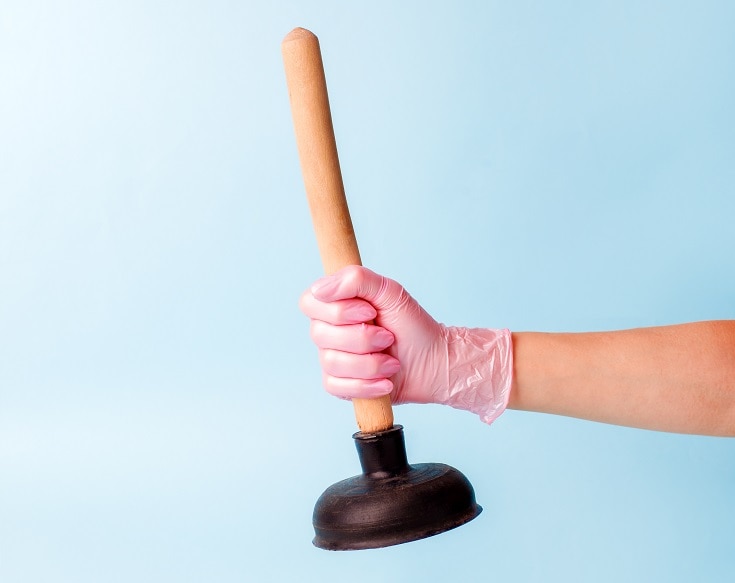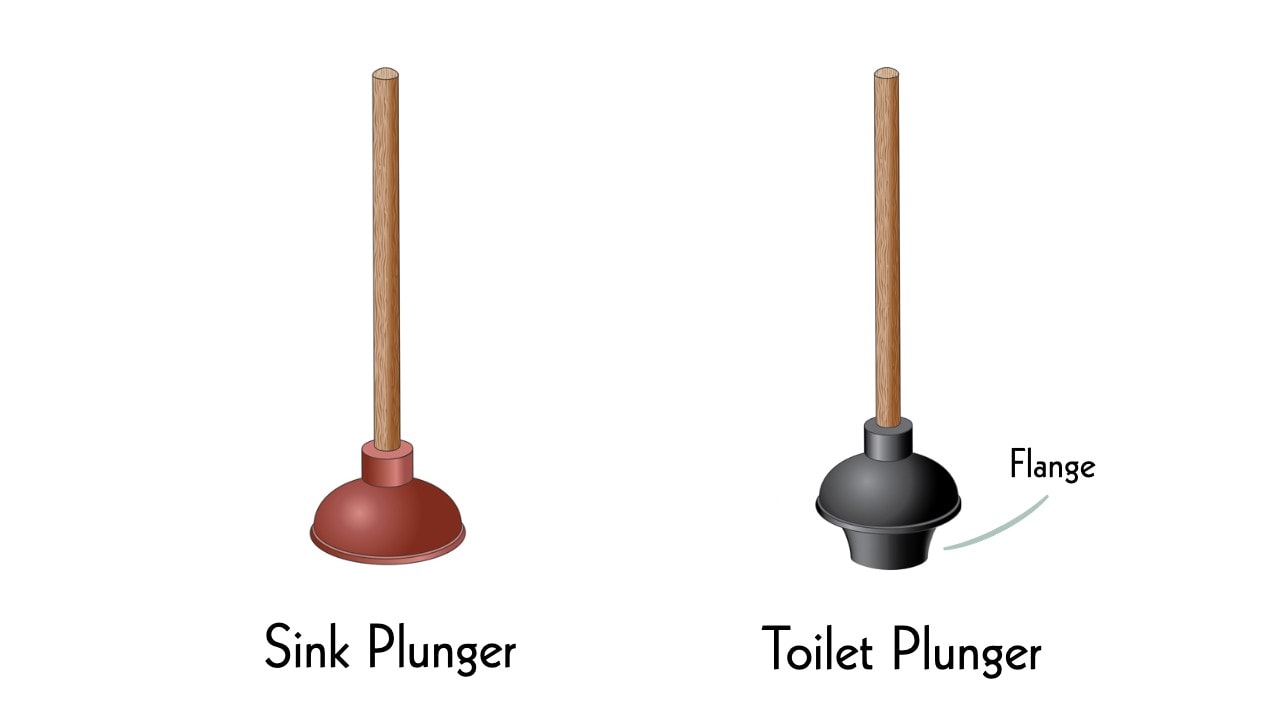Sink Plunger vs. Toilet Plunger: What’s the Difference?
-

- Last updated:

When you suffer a drain clog in your sink, it’s easy to feel helpless. Maybe you don’t think you’re very good at DIY repairs, or you’ve tried every trick you know, and nothing works, or maybe you’re too grossed out by the thought of the clog to even get near it. You might ask yourself, “Why can’t I just plunge out my sink the same way I use a plunger to unclog my toilet?” If you’ve ever said that, we’ve got good news; you can use a plunger to clear blockages from your sink drain!
There’s a catch, though. You can’t just take your toilet plunger to the sink and hope it works. Sink plungers are shaped differently and used in different ways. In fact, many people use plungers for toilets that are actually sink plungers. In this article, we’ll teach you how to recognize a sink plunger, why it’s very bad to mix up sink and toilet plungers, and how to use a plunger to get your sink working again fast.
How to Spot a Sink Plunger

It’s all in the flange.
You might have used a toilet plunger that has a solid rubber piece attached inside the cup. That’s the flange. Flanges can take a few different shapes, but they all have the same function: sealing the end of the drainpipe in order to apply force to the blockage more effectively.
It also keeps the plunger from turning inside out and filling with toilet water. If you’ve ever had a problem with a toilet plunger where, every few thrusts, you had to turn it right-side out again, splashing dirty water everywhere in the process, congratulations; you were actually using a sink plunger.
Sink plungers do not have a flange. They’re designed to form a seal on a flat surface using suction and need to be flexible since not all sinks are the same shape. However, this means they can also be used to unclog bathtubs and shower drains.

Why You Should Have Separate Toilet and Sink Plungers
As we’ve established, Sink plungers are not as effective as toilet plungers. Without a flange, they can’t seal the hole as well, and mostly just stir the water without moving the blockage. On the other hand, some toilet plungers can be used as sink plungers in a pinch. If you can fold the flange up and out of the way, the toilet plunger can function like a sink plunger.
However, you will then be using something you’ve dipped repeatedly in toilet water to clean something much closer to your face. Unless you regularly sanitize your toilet plunger, it will get disgusting. It’s best to have a toilet plunger that’s only for your toilet and a sink plunger that’s only for your sink. You can get them in different colors, so you can tell them apart before picking them up.
How to Unclog Your Sink With a Sink Plunger
Almost everyone has used a toilet plunger, but most people default to using wire hangers or snakes when it comes to blocked sinks, tubs, and shower drains. While clearing hair and garbage from the stopper with a hanger or pliers is the first thing you should do, that won’t always fix the blockage. Your next step is to break out the plunger.
Whether you’re unclogging a bathtub or sink, the steps remain the same:
- Block the overflow opening. This closes an air hole and ensures the plunger forms a complete seal. The overflow opening is a hole near the sink or tub rim, usually right under the faucet. Wet a small rag and stuff the end into the hole.
- Place the plunger over the drain. Run the water until the plunger cup is completely covered.
- Pump the plunger up and down about ten times. When you press down, compressed air pushes the blockage downward; when you pull up, suction yanks the blockage back. This back-and-forth should eventually wiggle the clog free.
- After ten thrusts, lift the plunger, and see if the water drains out.
- If the water doesn’t drain completely, repeat steps 2–4 until it does. Once it drains, run hot water for five minutes to flush the rest of the blockage out.
It’s possible that after several cycles, you still won’t have managed to clean out your drain. Be patient if it doesn’t work right away. If you’ve been trying for half an hour and the blockage hasn’t moved, you might need to take the more drastic step of snaking the drain. Snaking is a demanding and time-consuming process, so give plunging a chance to work first.

 What to Look For in a Plunger
What to Look For in a Plunger
Whether you’re buying a sink or toilet plunger, look for a handle made of either metal or plastic. Wood feels nice on your hands, but its rough surface provides more places for bacteria to gather and grow. Drip trays are a must-have accessory for any plunger. You’ve probably seen them; they’re plastic bases for storing plungers when they aren’t in use. Drip trays keep your plungers from dripping soiled water on your bathroom floor and circulate air around them to dry them out for the next use.
See Also:
- Dremel 4000 Rotary Tool Kit Review: Pros, Cons & Verdict
- Dremel 4200 vs 4300 Rotary Tool: Which One’s Best?
Featured Image Credit: Katerina Morozova, Shutterstock
Contents

